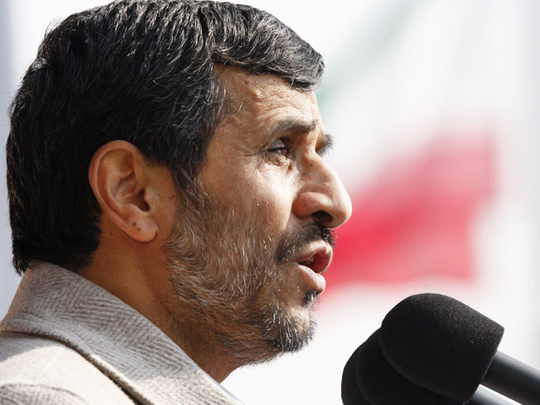
Tehran & Vienna: Iran's president says his country is installing more advanced centrifuges at its main uranium enrichment facility, a step certain to add to international concern over Tehran's accelerating nuclear programme.
Iran announced a week ago that it was enriching uranium to a higher level for use in fueling a reactor that produces medical isotopes. The new enrichment work is of major concern to the US and its allies because at higher levels the material can be used in nuclear warheads.
President Mahmoud Ahmadinejad told a news conference the new centrifuges are not yet operational but are five times more efficient than an earlier model at its Natanz enrichment plant.
Iran says its nuclear work is only for peaceful purposes.
Three world powers criticise enrichment
Meanwhile in Vienna, Russia joined the US and France in urging Iran to stop enriching uranium to higher levels in a statement shared yesterday with The Associated Press, suggesting the project reinforced suspicions that Tehran is seeking to make nuclear weapons.
Shrugging off international concerns, Iranian President Mahmoud Ahmadinejad announced the country was moving ahead to expand its enrichment capacities by installing more advanced machinery at its main enrichment facility.
In a confidential letter to the head of the International Atomic Energy Agency, the three world powers questioned Tehran's assertion that it had started the higher enrichment project to provide fuel to a research reactor providing medical isotopes for cancer patients.
The one-page letter was significant in reflecting unified Russian and Western opposition to Iran's move. Russia in the past has often put the brakes on Western attempts to penalise Tehran for defying UN Security Council demands that it freeze its enrichment programme, which can produce both nuclear fuel and the fissile core of warheads.
"If Iran goes ahead with this escalation, it would raise fresh concerns about Iran's nuclear intentions, in light of the fact that Iran cannot produced the needed nuclear fuel in time" to refuel the research reactor, said the letter.
Iran's decision to enrich to the 20-per cent level is "wholly unjustified, contrary to UN Security Council resolutions and represent[s] a further step toward a capability to produce highly enriched uranium," said the letter to IAEA chief Yukiya Amano.
The 20-percent mark represents the threshold between low-enriched and high-enriched uranium.
Although warhead material must be enriched to a level of 90 percent or more, just getting its present stockpile to the 20 per cent mark would be a major step for Iran's nuclear programme. While enriching to 20 per cent would take about one year, using up to 2,000 centrifuges at Tehran's underground Natanz facility, any next step - moving from 20 to 90 per cent - would take only half a year and between 500-1,000 centrifuges.











